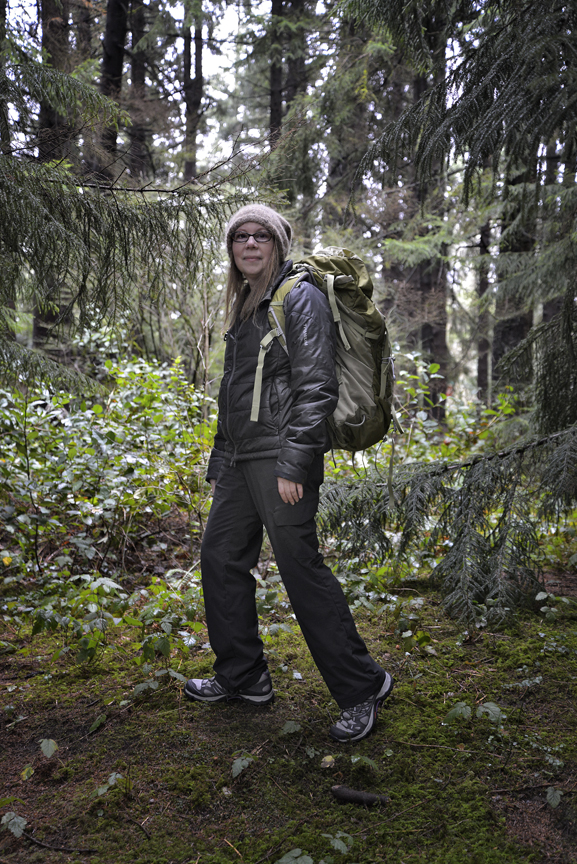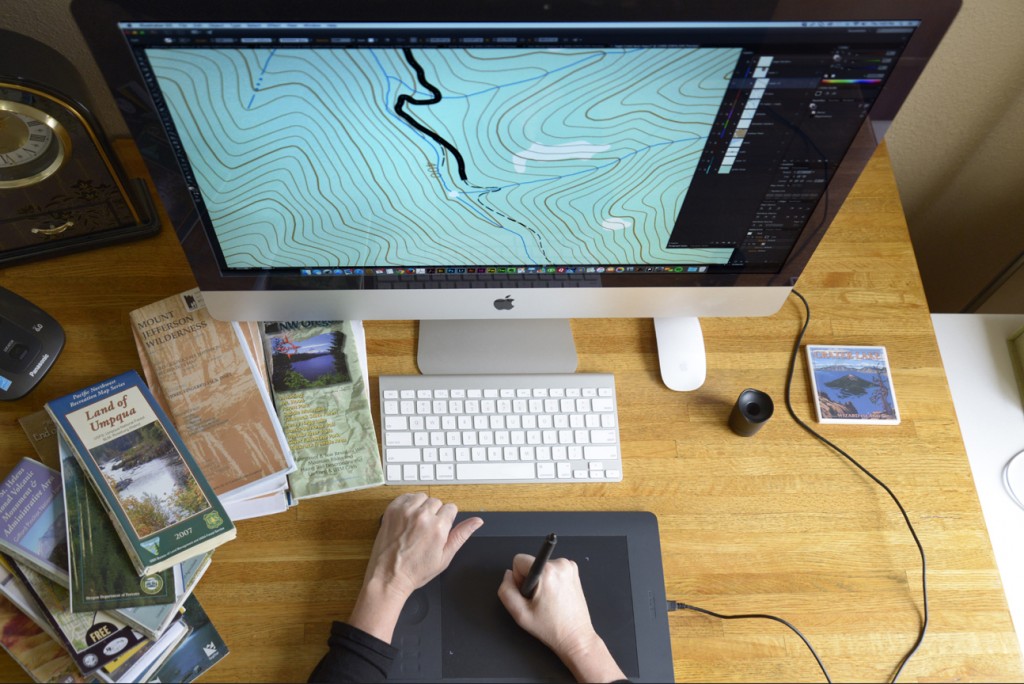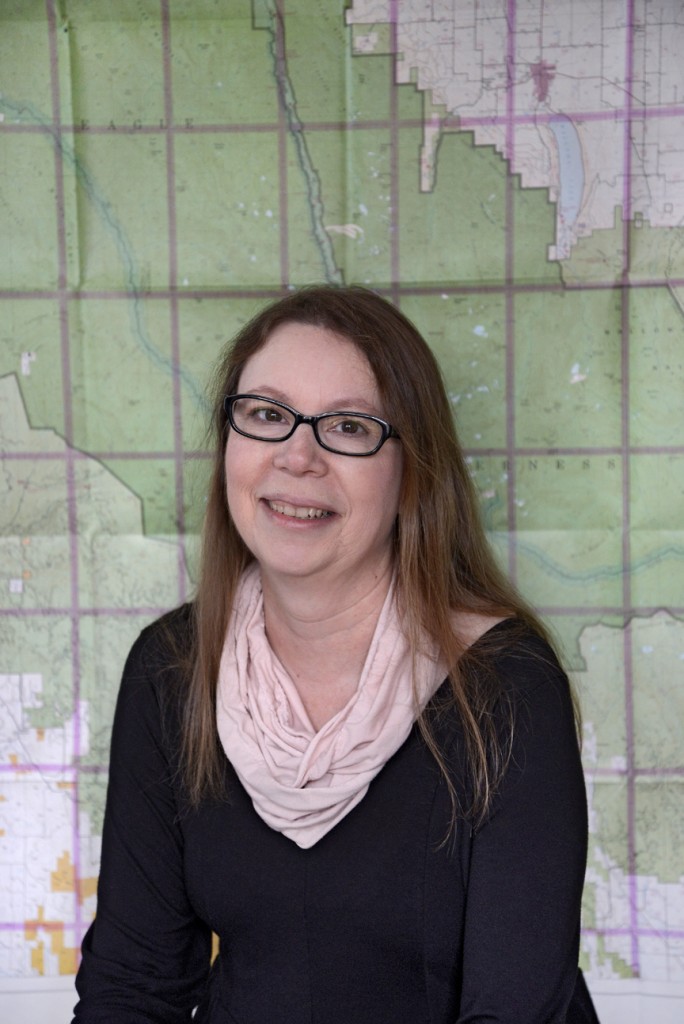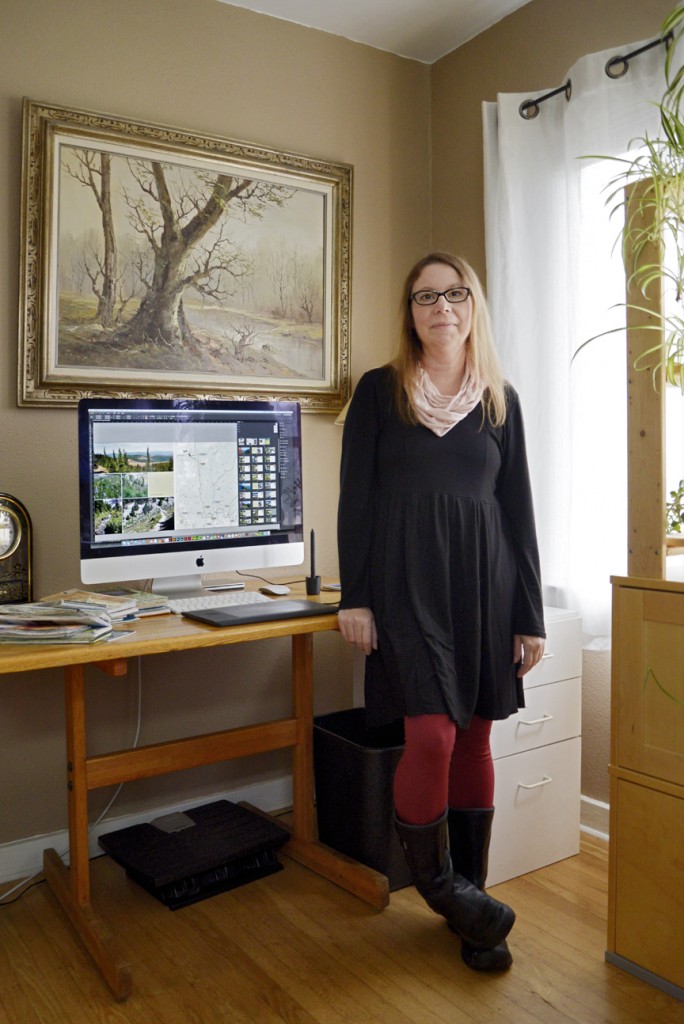Lisa Holmes is a graphic/web designer, author, outdoor enthusiast, and previous AIGA Portland board member. For over 20 years she has been co-owner of Yulan Studio, providing graphic design for environmental and outdoor recreation organizations. After moving from Kansas City to Oregon in 2007, Lisa became obsessed with the beauty of the Pacific Northwest landscape and began designing a series of self-published hiking books. “I Heart Oregon (& Washington)” is the first in the series, with more on the way. We caught up with Lisa to talk maps, mentors and how gender in the design world has evolved since the beginning of her career.

How did moving to the Pacific Northwest change you as a designer?
Moving to Portland from Kansas City nine years ago changed pretty much everything for me, but as a designer, I would say that the open, accepting, and creative spirit of this city allowed me to finally appreciate myself as a designer. It’s not like I didn’t have any confidence before, but there is something about the Pacific Northwest that says if you want to do something, you can make it happen here. In the midwest, the design industry tends to be driven by large corporations and their agencies, and it’s hard to feel accepted unless you are part of the corporate culture. I was part of that at one time, but it wasn’t where I belonged. I’ve spent most of my career as an independent designer and it’s where I’m the most comfortable (and subsequently, much more creative). Portland is a place where corporations don’t rule and I love that about it.
What’s your process for designing a hiking map?
Since trail maps are used for navigation, they are one of the most important parts of a hiking book. Most hiking books have maps that are black and white, without details needed to visualize the terrain. USGS maps – created by the United States Geological Survey – are a type of paper map used by hikers and backpackers. They include topographic contours used to distinguish three-dimensional details so you can tell where features such as slopes, ridges, valleys, and summits are located. Sold as paper maps at outdoor retailers, they are also available as PDF files for free downloading, and most can be opened and manipulated in Adobe Illustrator.
I’ve worked throughout my career with GIS map files from architects and engineers, so I’m used to working with this file format, stripping them of everything except what I need. For the trail maps in my hiking books, the elements I need are the topographic contours, streams, trails and roads. The first step is cropping the base map to only include the area needed for a particular hike. This process is quite time-consuming. The base maps have hundreds of layers, with elements inside clipping paths and groups that must all be taken apart before they can be cropped. Sometimes, the area I need is in partial segments on multiple base maps, which requires piecing them together. That means a lot of time is spent joining lines so they not only match up correctly, but are also converted into single elements.
The trails on the maps are dashed lines, and each dash is a separate line, so I have to redraw them, tracing over the original with a Wacom pen tablet. Then I add features not on the USGS maps, like elevation markers, mileage from point to point on a trail, and labels for features of a hike, such as waterfalls and viewpoints.
To ensure accuracy of the maps, I use multiple resources, including my vast collection of hiking maps and books. I also use online mapping programs, including a pro subscription to AllTrails.com, where I can edit routes on maps to determine exact mileage and elevation gain from point to point on a trail. I also use a GPS device when I hike, and can take the tracks created into Illustrator.


Who do you consider a mentor?
This has varied over the years… when I was in college in the mid-80s, April Greiman was doing cutting-edge work that influenced me greatly. It didn’t hurt that she had graduated from the same art school I was attending – the Kansas City Art Institute. I was also influenced by women working in New York: Louise Fili was designing book covers with a typographic focus that were ground-breaking, and Paula Scher was a prominent album cover designer during this time. Locally in Kansas City, Ann Willoughby’s firm was doing work that I admired. I wouldn’t say that any of these women were mentors in terms of being someone that I personally knew, but as women who were not only making it in the design industry, but were credited with some of the best work being done, they definitely influenced and motivated me.
More recently, my mentors have been outdoor adventurer women – thru-hikers, backpackers, mountain climbers – especially those who are older, proving that it’s never too late to get started. I certainly had never been an athletic person or someone who spent much time outside before living in the Pacific Northwest.
Over the course of your career, have you encountered obstacles or inequities specific to your gender? If so, what have you experienced?
This is a tough question, partly because I immediately think of the present time as a designer and think that things are pretty good for women right now, but if I look back, I can definitely see big shifts in how women are treated that have happened slowly over the last three decades.
I entered the design industry in the late 80s in the midwest, after graduating from an art school that was very much on the arty side of education. Entering the workforce, however, was a whole different world. Men in suits dominated even the creative fields then, and as a young woman, it was hard to be taken seriously.
When faced with situations where I felt that I wasn’t taken seriously due to being a woman, I found that it helped to be more assertive, especially as a smaller (and quiet) female, sometimes you have to be strong and loud to be heard.
On my first job out of college at a small architecture firm, outnumbered considerably by the men in the office, I had to listen to ongoing disrespectful conversations about women. After a vendor gave a demonstration of her company’s latest plotter, instead of talking about the product, they discussed in great detail her various body parts. Talk like this happened every day. They chastised me for not making my partner’s breakfast or lunch before I went to work each day. I soon discovered that working for myself was a much better option.
A studio owner with a potential freelance project asked if I was going to be like the other women he hired who, after he had spent time getting them up to speed working on his projects, would then get pregnant and quit working. I was in my late twenties and had no intention of having children, but I was so pissed at his insinuation that working with the female gender was compromised due to our ability to have offspring that I refused to give an answer. I did not get any work from him, and I was happy not to.
However, I must say that in spite of these experiences, for every asshole, there was at least one male colleague that would prove invaluable to my growth as a designer.
Overall, I do not feel that gender inequities keep me from being the designer that I want to be. At times, it might have kept me from making as much money as my male counterparts, but in current times, and at this point in my career, I feel that I’m treated as more of an equal.

If you could give one piece of advice to young female designers, what would it be?
Pursue personal projects. You don’t have to know where they will take you, or whether they have much chance of success. Do them anyway. Make them all yours, and pour all of yourself into these projects. I guarantee they will benefit you in ways you can’t imagine.
What are your top three favorite hikes in Oregon?
- Mirror Lake: a backpacking trip in the Wallowa Mountains’ Eagle Cap Wilderness
- McNeil Point: a hike to a stone shelter in the alpine region on Mount Hood
- Triple Falls: a hike through the mossy waterfall wonderland in the Columbia River Gorge
Photography by Christine Taylor